![]()
![]()
![]()
Use LEFT and RIGHT arrow keys to navigate between flashcards;
Use UP and DOWN arrow keys to flip the card;
H to show hint;
A reads text to speech;
41 Cards in this Set
- Front
- Back
|
Point Slope Form |
y-y1=m(x-x1) |
|
|
Slope Intercept Form |
y=mx+b |
|
|
Parallel Lines have the same _____________. |
Slope |
|
|
Perpendicular lines have a slope that is the ___________________________. |
Negative Reciprocal |
|
|
Negative Reciprocal means _______________. |
You flip the fraction and change the sign. |
|
|
To find a vertical asymptote you _____________. |
Set the denominator to zero. |
|
|
What is the horizonatal asymptote therome? |
1. If the degree of the numerator is less than the degree of the denominator (known as "bottom heavy"), y = 0. 2. If the degree of the numerator equals the degree of the denominator ("Equal Degree"), y is the ratio of the leading degree coefficent. 3. If the degree of the numerator is greater than the degree of the denominator ("Top Heavy") there is no horizontal asymptote. |
|
|
Transformations : f(x)+C does what to the graph? |
It moves the graph up C units |
|
|
Transformations: f(x)-C does what to the graph? |
It moves the graph down C units |
|
|
Transformations: f(x-C) does what to the graph? |
It moves the graph right C units |
|
|
Transformations: f(x+C) does what to the graph? |
It moves the graph left C units |
|
|
Transformations: -f(X) does what to the graph? |
It flips the graph about the x axis |
|
|
Transformations: f (-x) does what to the graph? |
It flips the graph about the y axis |
|
|
Transformations: C*f(x) (if c is greater than 1) does what to the graph? |
It stretches the graph vertically by a factor of C |
|
|
Transformations: C*f(x) (if C is less than 1 but greater than 0) does what to the graph? |
It shrinks the graph vertically by a factor of C |
|
|
Vertical means ________________. |
Up and Down
|
|
|
Horizontal means _______________. |
Left and Right |
|
|
Even functions have all ______________ exponents. |
Even |
|
|
Odd functions have all _____________ exponents. |
Odd |
|
|
Functions that are neither odd or even have a __________ of odd and even exponents. |
Mix |
|
|
Sin is a ____________ function. |
Odd |
|
|
Cos is a ___________ function. |
Even |
|
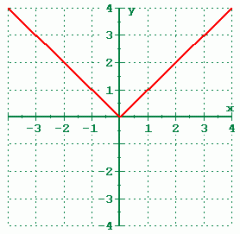
This graph is what kind of function? |
Absolute Value |
|
|
Domain is the ______________ of a function. |
X values |
|
|
Range is the ______________ of a function. |
Y values |
|
|
For a limit to exsist, it must be __________ from the left and right. |
Equal |
|
|
A function is continuious at a number A if: |
1. f(A) exsists 2. The limit of f(x) as a x approaches A exsists 3. The limit of f(x) as x approaches A equals f(A) |
|
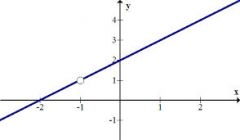
What kind of discontinuity is this? |
Removable |
|
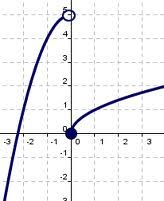
What kind of discontinuity is this? |
Jump |
|
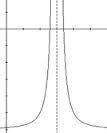
What kind of discontinuity is this? |
Infinite |
|
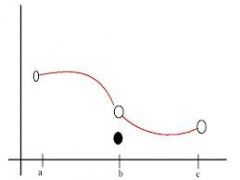
What kind of discontinuity is this? |
Removable |
|
|
A step function is ______________ at every value. |
Discontinuious |
|
|
A function f is continuous from the Right at a number A if: |
The limit f(x) as x approaches A from the right is equal to f(A) |
|
|
A function f is continuous from the Left at a number A if: |
The limit f(x) as x approaches A from the left is equal to f(A) |
|
|
A jump discontinuity would have _____________ limits from the left and the right. |
Different |
|
|
A polynomial function is continuious _____________. |
Everywhere |
|
|
A rational function is continuous ________________. |
Everywhere it is defined. |
|
|
A number/0 will always give you _____________, ____________, or _________. |
DNE -Infinity Infinity |
|
|
When evaluating a limit as x approaches infinity: If the degree of the numerator equals the degree of the denominator, the limit will always be ___________. |
A ratio of those (the highest) degrees |
|
|
When evaluating a limit as x approaches infinity: If the degree of the numerator is larger than the degree of the denominator, the limit will always be ___________. |
+ or - Infinity *Let x be a big number to figure out if it is positive or negative |
|
|
When evaluating a limit as x approaches infinity: If the degree of the numerator is smaller than the degree of the denominator, the limit will always be ___________. |
Zero |

